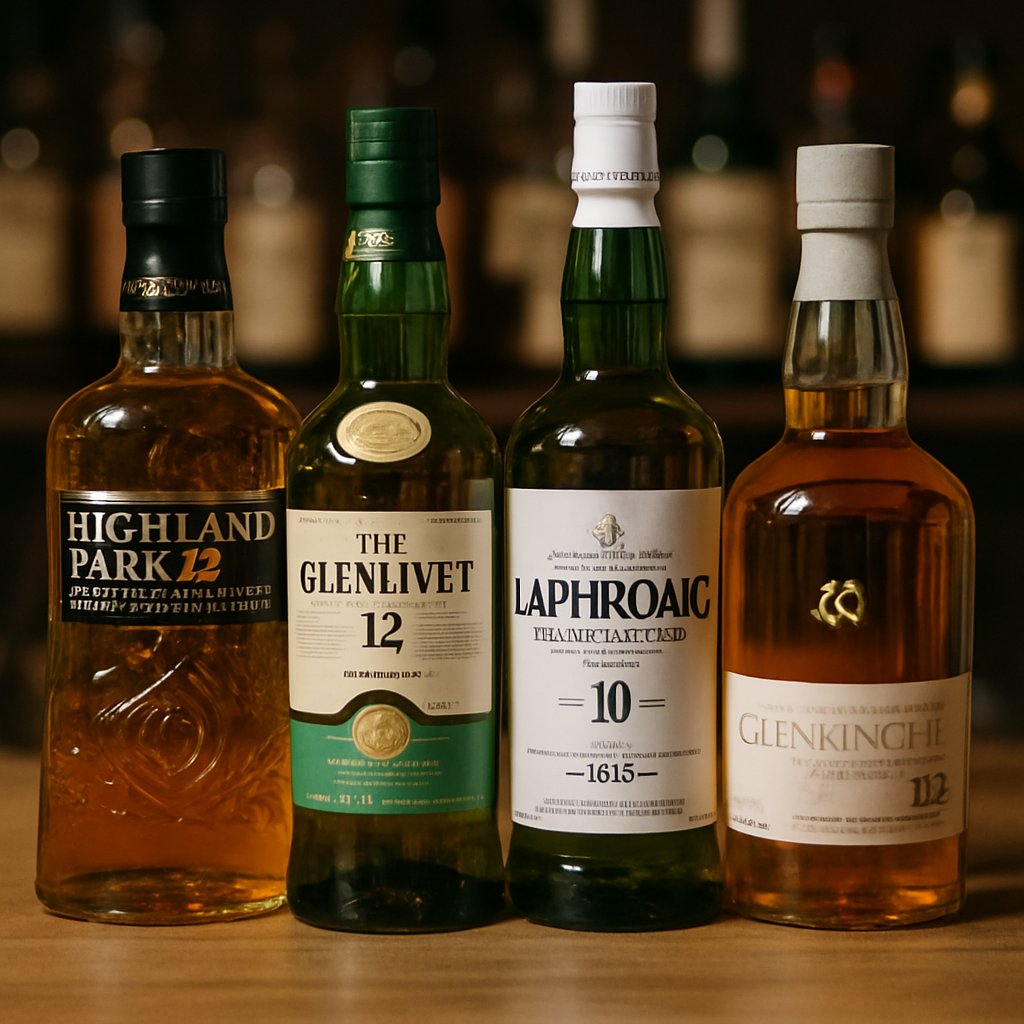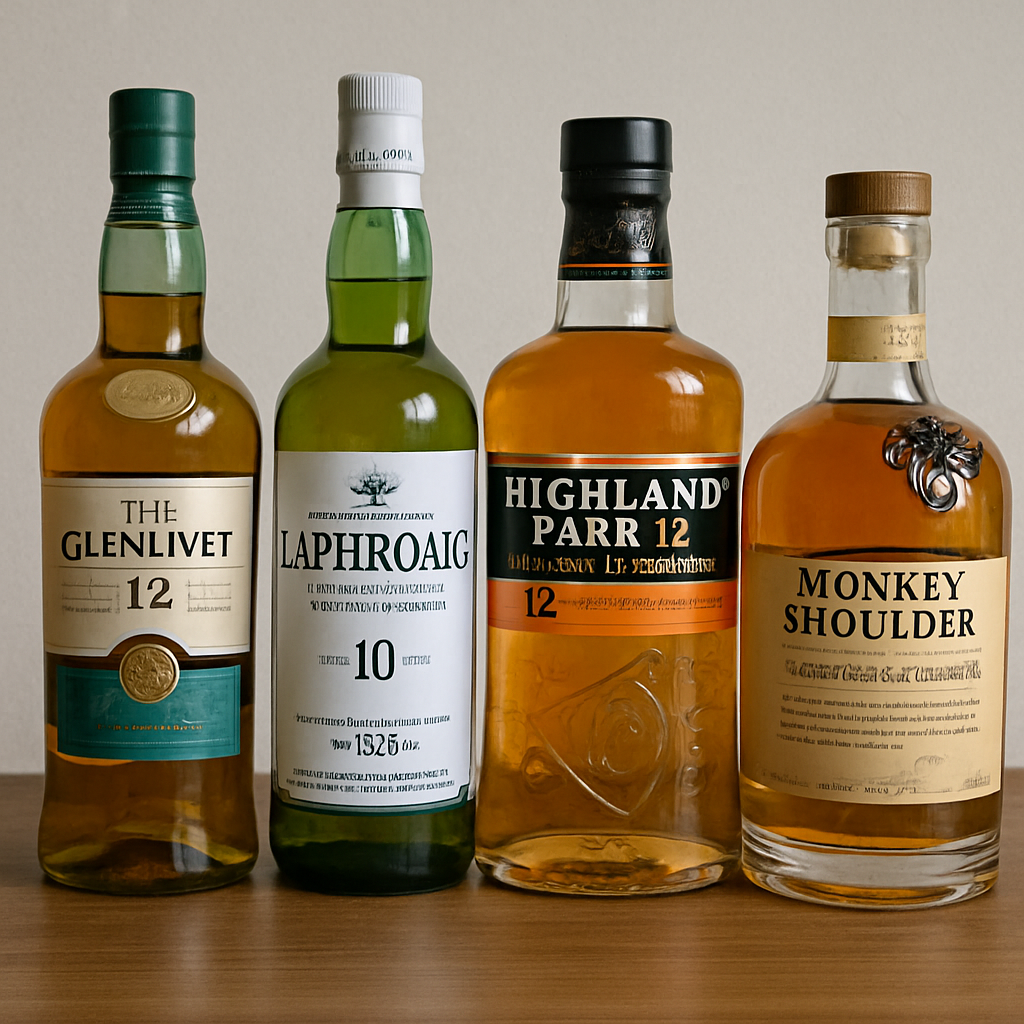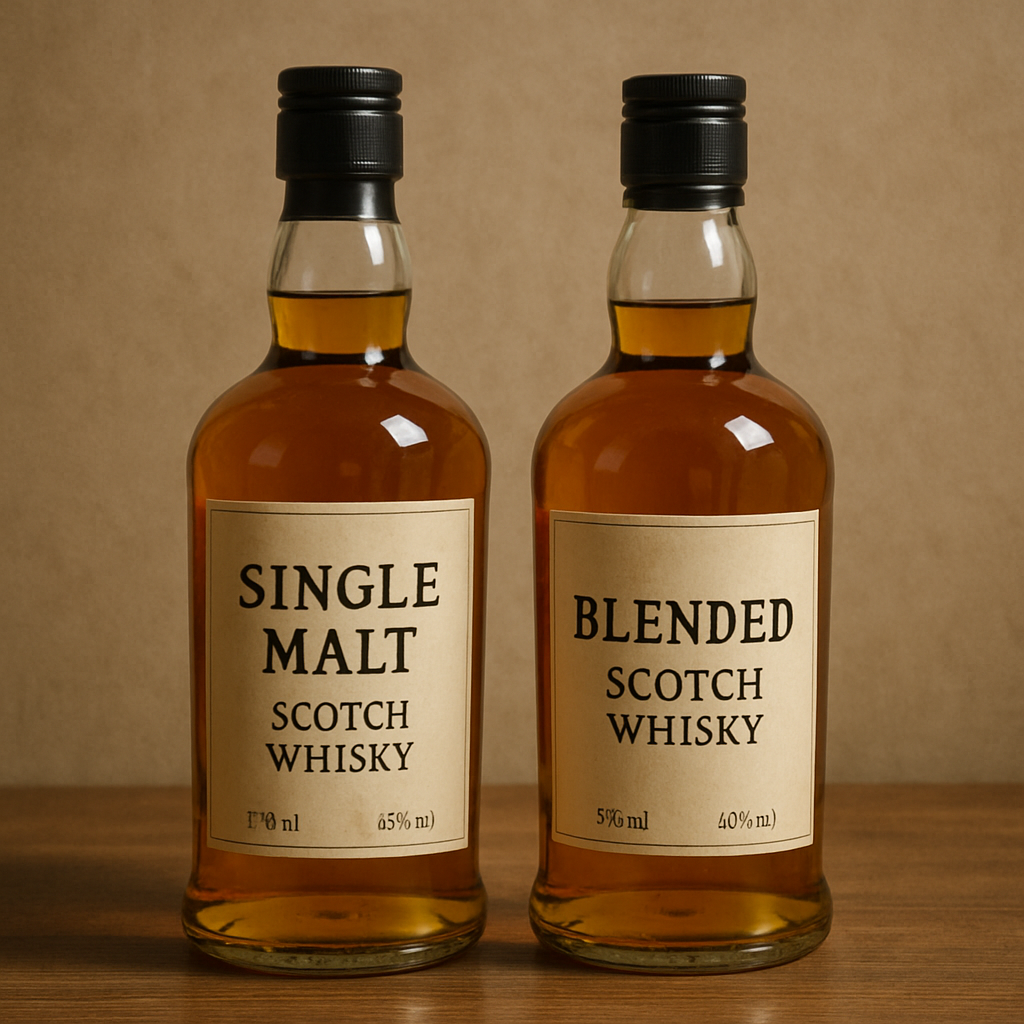The Art of Choosing Good Scotch
Choosing a good scotch is an art form. It requires knowledge, patience, and a keen sense of taste.
Scotch whisky is a complex beverage with a rich history. It is crafted in Scotland under strict regulations.
There are many types of scotch whisky, each with unique characteristics. Single malt, blended, and grain whiskies offer diverse flavors.
Understanding these types is key to selecting a good scotch. Each type has its own appeal and distinct taste profile.
Regions in Scotland, like Islay and Speyside, influence the flavor of scotch. These regions add depth and variety to the whisky experience.
Good scotch brands are known for their quality and craftsmanship. Brands like Glenfiddich and Macallan are celebrated worldwide.
The art of choosing good scotch involves exploring these elements. It is a journey of discovery and personal taste.
Understanding Scotch Whisky: What Makes It Unique
Scotch whisky holds a special place in the world of spirits. It's not just about taste; it's about heritage and authenticity. What sets scotch apart is its strict production criteria. Made only in Scotland, it must age in oak casks for at least three years.
The ingredients are simple but integral—water, malted barley, and yeast. Yet, it's the artistry in combining these that gives scotch its allure. Each distillery offers a unique interpretation of this classic beverage.
The regions of Scotland contribute significantly to its uniqueness. The environment, climate, and local traditions all play roles. This results in distinct regional profiles for each scotch type.
Some key features that make scotch whisky unique are:
- Distinct regional characteristics
- Mandatory aging in oak casks
- Strict geographic and production regulations
- Use of malted barley and pure water
Crafting a good scotch is both a science and an art. Techniques passed down through generations highlight the craftsmanship involved. The uniqueness of scotch whisky draws enthusiasts from around the globe to explore its rich, layered flavors.
The Main Types of Scotch Whisky
Scotch whisky comes in several distinct types. Each offers a unique experience. Knowing these can greatly enhance your selection process.
The first is Single Malt Scotch. Made from malted barley, it's produced at a single distillery. Each bottle carries the distillery's signature style. It has gained fame for its complexity and depth.
Single Grain Scotch is less common but equally intriguing. It includes grains like wheat or corn, along with barley. Produced at a single distillery, it offers lighter flavors, making it ideal for blending.
Blended Malt Scotch combines multiple single malts. It is celebrated for its rich and layered tastes. This blend delivers a more rounded flavor profile.
Blended Grain Scotch is another option. It involves blending grain whiskies from different distilleries. Its lightness and smoothness are often appealing to new drinkers.
Blended Scotch Whisky is highly popular. Mixing malt and grain whiskies, it balances taste and affordability. The result is a versatile drink, suitable for various occasions.
Here’s a quick overview of the main types:
- Single Malt Scotch
- Single Grain Scotch
- Blended Malt Scotch
- Blended Grain Scotch
- Blended Scotch Whisky
Each type offers its own appeal. Exploring these categories can provide a broader understanding of what makes scotch truly special.
Exploring Scotch Regions: How Location Shapes Flavor
Scotch whisky's distinct flavors often stem from its region of origin. Scotland's diverse landscapes offer unique environments for whisky production.
Islay, famed for its peaty and smoky whiskies, appeals to those who enjoy bold flavors. Its coastal location adds a briny edge to its whiskies. Ardbeg and Lagavulin are standout examples.
Speyside, nestled by the River Spey, is known for sweet and fruity whiskies. This region features rich, malty flavors. Names like Glenfiddich and Macallan are pillars of Speyside.
The Highland region offers the broadest variety. Its whiskies range from floral and light to smoky and full-bodied. The variation is vast, with Glenmorangie and Dalmore being popular choices.
Campbeltown, although smaller, has a strong character. Its whiskies are often robust and complex. Springbank is a hallmark of this region's distinct style.
Lastly, Lowland whiskies are typically lighter and more floral. These make an excellent introduction for new whisky enthusiasts. Auchentoshan is a key representative of this style.
Overview of Scotch Whisky Regions:
- Islay: Peaty and smoky
- Speyside: Sweet and fruity
- Highland: Diverse flavors
- Campbeltown: Robust and complex
- Lowland: Light and floral
Exploring these regions enriches understanding of how climate and terrain influence taste.
Decoding the Label: Age, ABV, and Other Key Details
Understanding a scotch whisky label reveals much about the drink within. Key details help identify quality and character.
The age statement signifies the youngest whisky in the blend. Older whiskies often command higher prices due to maturity and rarity. An age statement can guide expectations about flavor depth.
Alcohol by volume, or ABV, indicates the whisky's strength. Scotch typically ranges from 40% to 60% ABV. Higher percentages may offer more intensity, but also demand cautious sipping.
Other features to note include the region of origin and cask type. These elements hint at potential taste profiles and complexity. A sherry cask finish, for example, might suggest rich, sweet notes.
Key Label Details to Consider:
- Age Statement: Maturity level
- ABV: Alcohol strength
- Region and Cask Type: Influence on flavor
Attention to labels enhances your understanding, helping select scotch with confidence.
Single Malt vs. Blended Scotch: What’s the Difference?
In the world of scotch, single malt and blended represent two distinct styles. Understanding these differences enriches your appreciation of this fine spirit.
Single malt scotch originates from one distillery and uses malted barley. This type emphasizes the unique character of the distillery. It is often celebrated for its depth and complexity.
Blended scotch, on the other hand, is a mix of various single malts and grain whiskies. It aims for a balanced, consistent flavor, appealing to a broad audience.
Choosing between them depends on personal preference. Single malt offers complexity, while blends provide smoothness. Both have their place in a well-rounded whisky experience.
Key Distinctions:
- Single Malt: One distillery, complex flavors
- Blended Scotch: Multiple sources, balanced taste
Exploring both types allows for a broader taste experience, enhancing your scotch journey.
Top Scotch Whisky Brands to Know
Choosing the right scotch starts with knowing the top brands. These brands often represent the finest in craftsmanship and taste.
Among the revered names are Glenfiddich, Macallan, and Laphroaig. Each offers a unique experience reflective of their heritage and region. Glenfiddich is known for its rich and fruity notes, whereas Macallan boasts a luxurious, complex profile.
Islay-based Laphroaig, famous for its smoky and peaty flavor, caters to those with a taste for the intense. Such variety allows each brand to appeal to different palates, making your selection process both exciting and personal.
Whether you prefer the gentle sweetness of Speyside or the boldness of Islay, there’s a brand that matches your taste. Exploring these brands deepens your understanding and enjoyment of scotch.
Brands to Explore:
- Glenfiddich: Fruity, rich flavors
- Macallan: Luxurious, complex
- Laphroaig: Smoky, peaty intensity
Identifying quality brands enriches your tasting journey and helps you discover new favorites.
How to Taste and Evaluate Scotch Like a Pro
Tasting scotch is an art that involves more than just drinking it. It requires attention to detail and understanding of flavor nuances. Start by observing the color which can hint at its aging process and cask type.
Next, bring the glass to your nose and inhale deeply. The aromas can be complex, ranging from floral and fruity to smoky and peaty. This sensory step is crucial in identifying different scotch profiles.
When you finally take a sip, let the liquid linger on your tongue. Notice the texture and flavors as they evolve. Are there notes of honey, vanilla, or perhaps a spicy kick?
Finish by observing how long the flavors last and what lingers in the aftertaste. A good finish often indicates a well-made scotch. To enhance your understanding, compare notes with others and learn from shared experiences.
Steps to Evaluate Scotch:
- Observe: Notice the color and clarity.
- Smell: Identify distinct aromas.
- Taste: Recognize texture and flavors.
- Finish: Evaluate the aftertaste.

Mastering these steps can transform your scotch appreciation journey, offering deeper insights with every sip.
Price vs. Quality: Finding Good Scotch at Every Budget
Scotch whisky can be found at many price points, from affordable to exorbitant. Price doesn’t always determine quality; value can be found at any budget level. Understanding what contributes to the price can guide your choices.
A higher price often reflects longer aging or limited edition releases. However, young whiskies from reputable brands can deliver excellent taste at a lower cost. Don't overlook newer distilleries, which may offer innovative and high-quality scotches.
Consider what aspects are most important to you. Is it the age statement, brand reputation, or flavor profile? Each factor may play a role in determining a scotch's value.
Tips for Budget-Friendly Selection:
- Explore lesser-known brands for hidden gems.
- Compare tasting notes over brand prestige.
- Look for promotional offers from retailers.
The art lies in balancing your priorities with your wallet, making the journey of discovery both satisfying and economical.
Tips for Choosing Your First (or Next) Bottle
Choosing a scotch can be overwhelming with so many options. Start with understanding what flavors you enjoy. Are you drawn to smoky or sweet notes? Identifying your taste preferences can narrow down your choices.
Consider starting with a well-regarded brand. Many good scotch brands produce entry-level bottles that showcase their signature style. This can provide a baseline for your future exploration.
If you're uncertain, consult staff at your local liquor store. They can recommend brands that suit your palate and fit your budget. Don't hesitate to ask for small samples if available.
Practical Tips for Selection:
- Identify your flavor preferences beforehand.
- Research online reviews for user experiences.
- Seek advice from knowledgeable staff or friends.
Taking these steps not only aids in choosing your next bottle but also enhances your appreciation of the scotch world.
Enjoying Scotch: Serving, Pairing, and Savoring
Enjoying scotch is about more than just taste. It's an experience that involves how it's served, what it’s paired with, and how it’s savored. Serving scotch neat highlights its full range of flavors. However, many find adding a splash of water opens up the aroma and taste.
Pairing scotch with food can elevate both the drink and the dish. Hearty foods like cheeses, dark chocolate, or smoked meats complement scotch well. Each pairing brings out unique flavors in both the scotch and the food, creating a balanced experience.
Take time to savor your scotch. Note its color, inhale the aroma, and enjoy every sip. Letting it linger in your mouth reveals subtle flavors that change with each taste.
Serving and Pairing Tips:
- Experiment with serving neat vs. with water.
- Pair with complementary foods like cheese or chocolate.
- Sip slowly to appreciate evolving flavors.
Building Your Scotch Collection: Where to Start
Starting a scotch collection can be exciting and fulfilling. Begin with a few carefully chosen bottles representing different styles and regions. This gives a balanced range of flavors to explore and enjoy.
Consider beginning with renowned brands, as they often represent the classic flavors of scotch. Look for a mix of single malt and blended whiskies to appreciate different textures and tastes. Quality trumps quantity, so focus on the best you can afford.
As your collection grows, add bottles that reflect your personal preferences and discoveries. Each new bottle should contribute to a varied and enriching tasting experience.
Essentials for Starting Your Collection:
- Choose bottles from different regions.
- Include both single malt and blended scotches.
- Prioritize quality over quantity.
Frequently Asked Questions About Scotch Whisky
What is the difference between scotch and whisky? All scotches are whiskies, but not all whiskies are scotch. Scotch must be made in Scotland.
How should scotch be stored? Keep it upright in a cool, dark place. Avoid temperature fluctuations, which can affect its flavor.
Is older scotch always better? Not necessarily. While age can add complexity, it is more about personal preference and the quality of each bottling.
Can scotch go bad? Unopened, scotch can last indefinitely. Once opened, consume it within a few years for the best taste.
What glass should I use? A tulip-shaped glass is ideal for savoring aromas. It allows flavors to gather before reaching your nose.
How should beginners approach drinking scotch? Start neat. Then add a few drops of water to release complex flavors without diluting too much.
Conclusion: The Ongoing Journey of Scotch Discovery
Embarking on the quest to choose a good scotch can become a lifelong journey. With each sip, there's an opportunity to uncover new flavors and stories. This rich heritage beckons enthusiasts to explore further.
The world of scotch offers endless variety. From distinctive regions to unique distilleries, there is always something new to taste. This exploration is what keeps scotch aficionados engaged and intrigued.
Whether a beginner or a seasoned drinker, scotch invites you to continually expand your palate. Enjoy the art of discovering good scotch one dram at a time.








